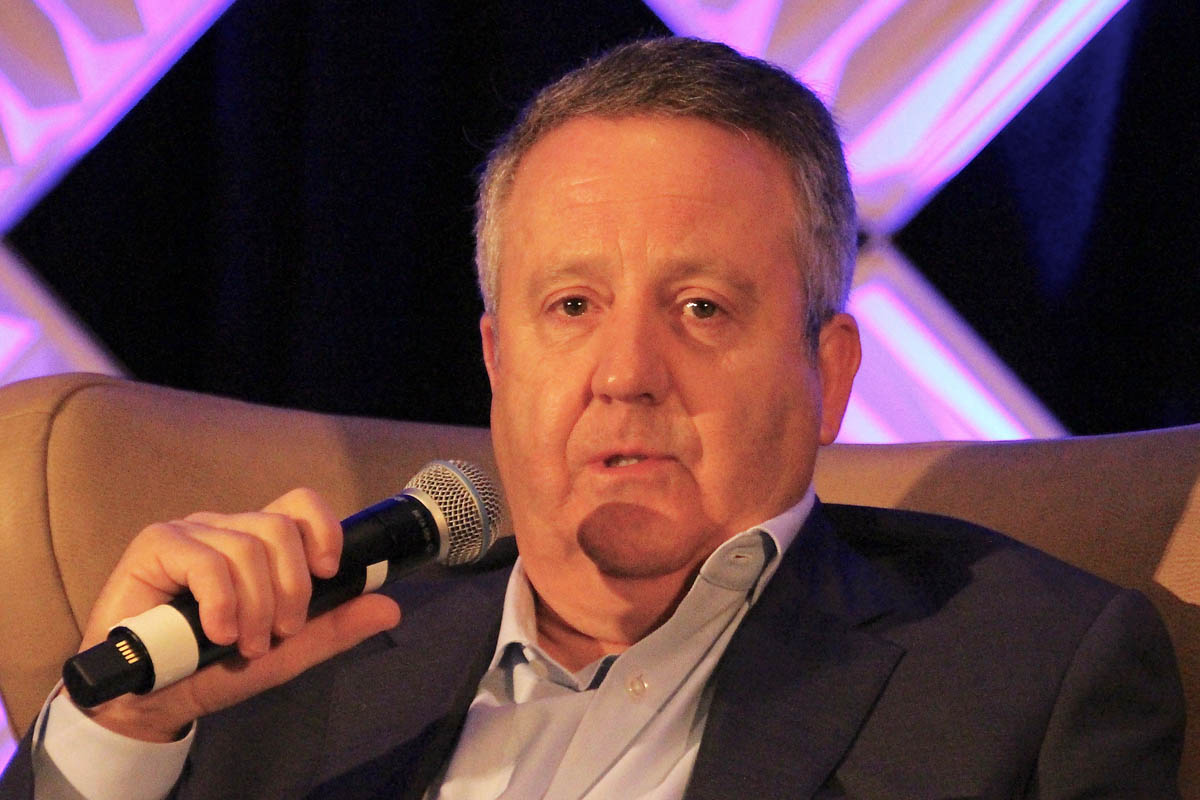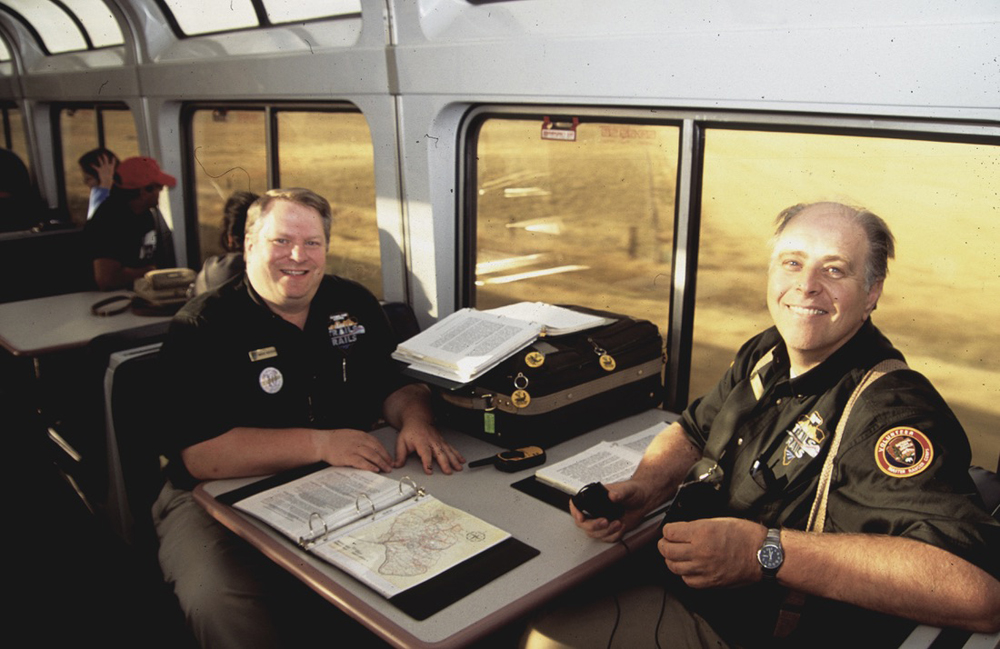None of the other five big systems — each of which is running or shifting to an operating plan based on the late E. Hunter Harrison’s principles of Precision Scheduled Railroading — would comment on Rose’s statements.
Rose, speaking at a conference on Monday, said the sweep of PSR across the Class I industry will pose a regulatory risk as railroads opt to drop service to certain customers and locations. Rose also said that PSR does not result in service improvements.
But a former colleague of Harrison, who brought his operating model to Canadian National, Canadian Pacific, and CSX Transportation, defended Precision Scheduled Railroading.
“I think that [Rose] is assuming that PSR requires that some low-margin traffic that absorbs rail capacity will be demarketed,” says the former Harrison colleague, who spoke on the condition that his name not be used.
“Some traffic will (and should) be priced more opportunistically,” the Harrison colleague says. “As a rail carrier, when [capital spending] is spent to improve rail speed and reliability to attract and retain premium intermodal traffic, that carrier will not give an occasional shipper the same rate and delivery schedule as, say, UPS traffic.”
Rose said that railroads have the right to differentiate pricing. What they don’t have, he says, is the right to simply walk away from certain markets. CSX Transportation, Norfolk Southern, and Union Pacific have ended service in hundreds of low-volume intermodal lanes in the past few months.
“When you start redefining markets, I think then the federal policymakers will look at this, and quite frankly, they will not be happy with us,” Rose told the National Railroad Construction and Maintenance Association.
“With respect to shippers’ comments on the improved level of service, although several railroads in the lower 48 have announced that they will embrace PSR, two observations emerge: With the exception of CSX, those carriers have not yet scratched the surface of PSR, so it is simply too soon to tell,” the railroad executive says. “Further, some have indicated that they would only partially implement it. A partial implementation will prove unsuccessful.”
Both UP and NS, under pressure from Wall Street to boost profitability and cut costs as CSX has done, last fall began implementing their own versions of PSR. UP and NS executives say they are aiming for a slow rollout of operational changes in an effort to minimize the potential for service disruptions.
BNSF, a unit of Berkshire Hathaway, is the lone Class I system that is not running with Harrison’s system that keeps a tight lid on costs and places a heavy emphasis on keeping locomotives, cars, and crews in motion.
The three big systems that Harrison once led have the industry’s lowest operating ratios and are the most profitable Class I railroads.
BNSF’s philosophy is that customer service drives profitability, the virtuous cycle of reinvestment, and provides the railway with a social license to operate. This goes against the grain of the current trend at most of the publicly traded Class I railroads, which is to reward investors as quickly as possible through a combination of share buybacks, cost-cutting, rate increases, and a focus on the operating ratio.
CN and CSX declined to comment. UP said it couldn’t comment because it was in its pre-quarterly earnings “quiet period.” CP and NS representatives did not return emails from Trains News Wire seeking comment.















Thank God Matt Rose stepped up to the plate and said it like it needed to be said. Im sick and tired of the corporate greed and it needs to be recognized by making deep cuts with getting rid of valuable employees is not the answer.
Thank goodness for railroad execs like Matt Rose. The BNSF is the gold standard of a railroad which truly cares about its customers. It has invested billions over the past 20 years upgrading its already superb Chicago-California main line to eliminate any single track pinch points such as Abo Canyon in New Mexico. “Precision Railroading” is nothing more than a catchphrase to infatuate stockholders. Any doubters? Take a road trip on Rte. 66 to CA, AZ or NM and watch 100+ freights a day blasting along on the railroad’s superbly maintained mainline. Let everyone else obsess themselves with operating ratios and abandoning loyal customers. In the end, they’ll be the losers.
Also somewhat ironic that the last Class 1 holdout to PSR is EHH’s former employer… where he got his start… Frisco/BN/BNSF. He left BN after 26 years… after being sidelined.. somehow his superiors at BN overlooked his potential. Who knows.. maybe Matt Rose and his peers at BNSF have a better way of doing things, and they’re not wrong about the customer being all important. But lets hope they don’t compound their earlier error of allowing EHH to go by outright rejecting his brainchild, PSC. As it is we’ll never know what he could have done at BN had he stayed on.
Well, there’s no need to ever “walk away” from undesirable business. Just price this business so high that THEY walk away.. problem solved. No business is obligated to service all comers… We all service the accounts we want to service and which work best for us. If its a difficult account or if the volumes just aren’t there, price it accordingly.. that’s simple supply and demand.
Gerald McFarlane, nope not living under a rock. I’m a life long journalist, and this isn’t Watergate. Tired of Train Magazine’s worship of EHH and PSR, rarely acknowledging its immense drawbacks. Anonymous comments have no place in this debate. If you have an opinion then state it – but don’t hide.
good for Matt Rose speaking up and not going along with the herd. They do not need to push small customers aside in the push for fast delivery. Small customers have been the backbone of railroading since trains started running. Glad to hear this from BNSF, they will always be my favorite because they run on some tracks built by Frisco and have kept open the yard where Dad worked, it is busy with intermodal traffic today.
Look, the emperor isn’t wearing any clothes!
(why no-one wants to be publicly named saying PSR isn’t the savior of railroading.)
For the last 10 years, shippers have been asking, no begging, for consistent trip times. Along comes PSR and trains get held for tonnage, adding variability. Long trains that don’t fit in sidings or yard tracks slow down through-put and add more variability in transit times. Customers leaving is not a good thing, while PSR says it is.
Well; let’s consider this for a moment. Keith Creel and JJ Ruest could safely be characterized as “true believers” where PSR is concerned and are just unwilling to make negative comments where a respected industry colleague is concerned.
Pat Ottensmeyer, Jim Squires and Lance Fritz, on the other hand, are either having PSR shoved down their throats by their boards and Wall Street or, in the case of KCS, probably soon will be. I would submit there’s likely nothing of a sincere nature these gentlemen could say about Matt’s comments regarding PSR that wouldn’t suddenly place their careers on a banana peel.
Question about RR schedules. Seems the new plan is to hold trains in yards until they can but together these long 2+ mile trains. How is that being more fluid? If dwell time is a factor, isn’t this adding to dwell time? Wouldn’t getting a 1 mile long train out of the yard sooner be more fluid & lessen dwell time & increase railcar speed? One more question. Would intermodel or TOFC trains running more frequently compete better with trucks? I know there would be more costs with more crews, but wouldn’t this be more customer friendly?
William Allen, I’ve been saying the same thing, customers & moving their product should be top priority. And if you do it well the customers will reward you with more business & new customers will be attracted to your railroad. As Rose pointed out, the money grubbers on Wall St only look 3 months into the future & how fast they can fill their pockets. Any one in the customer service business knows without a satisfied customer they are out of business. If PSR satisfies the customer, go for it. But it seems the customer playes 2nd fiddle in the PSR plans.
“but even some of the biggest news stories have been based on information from anonymous(to the reader) sources(prime example: “Deep Throat from the Watergate investigation”.”
Good lord we aren’t talking about a big political thing here, it’s someone stating his opinion about PSR. He has to hide in order to state an opinion about railroading?
Gordon Heft,
Unless you’ve been living under a rock, anonymous sources are a STAPLE of journalism, whether that be good or bad journalism is a PERSONAL opinion, but even some of the biggest news stories have been based on information from anonymous(to the reader) sources(prime example: “Deep Throat from the Watergate investigation”.
Finally a guy who gets it! Customer service is what it’s all about. Without customers there is no use for railroads.
Shame on Trains for its continual practice of anonymous comments from so-called rail experts. Very poor journalism. It’s getting old. Thank you to Mr. Rose for speaking the truth.
RRs have the right to various subsidies, block traffic, have accidents with cross traffic, add noise pollution – and for good reason, they provide an essential function for our economy. If PSR assumes that the only, or even the most important metric for trains is operating ratio they will eventually be taught (because they may not willingly learn) a painful lesson.
I’ll say it even stronger than Curt Warfel. Anyone but Matt Rose saying this would jeopardize their access to capital at acceptable rates. It’s also telling that the analyst refused to be identified.
“Says the former Harrison colleague, who spoke on the condition that his name not be used.”
Well if he is so sure that Mr. Rose is wrong, why hide?
And, just yesterday Newswire featured a chart illustrating CSX as the slowest in growing traffic of all the Class Ones. Yet, CSX is to be emulated?!!
In his autobiography Krebs said BNSF’s costs (when it was discussing merger with the CN) were as low as the CN’s, the difference in their operating ratios was that the CN had higher rates.
Lmaoo … Well ..and there it is!